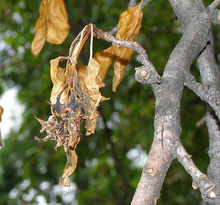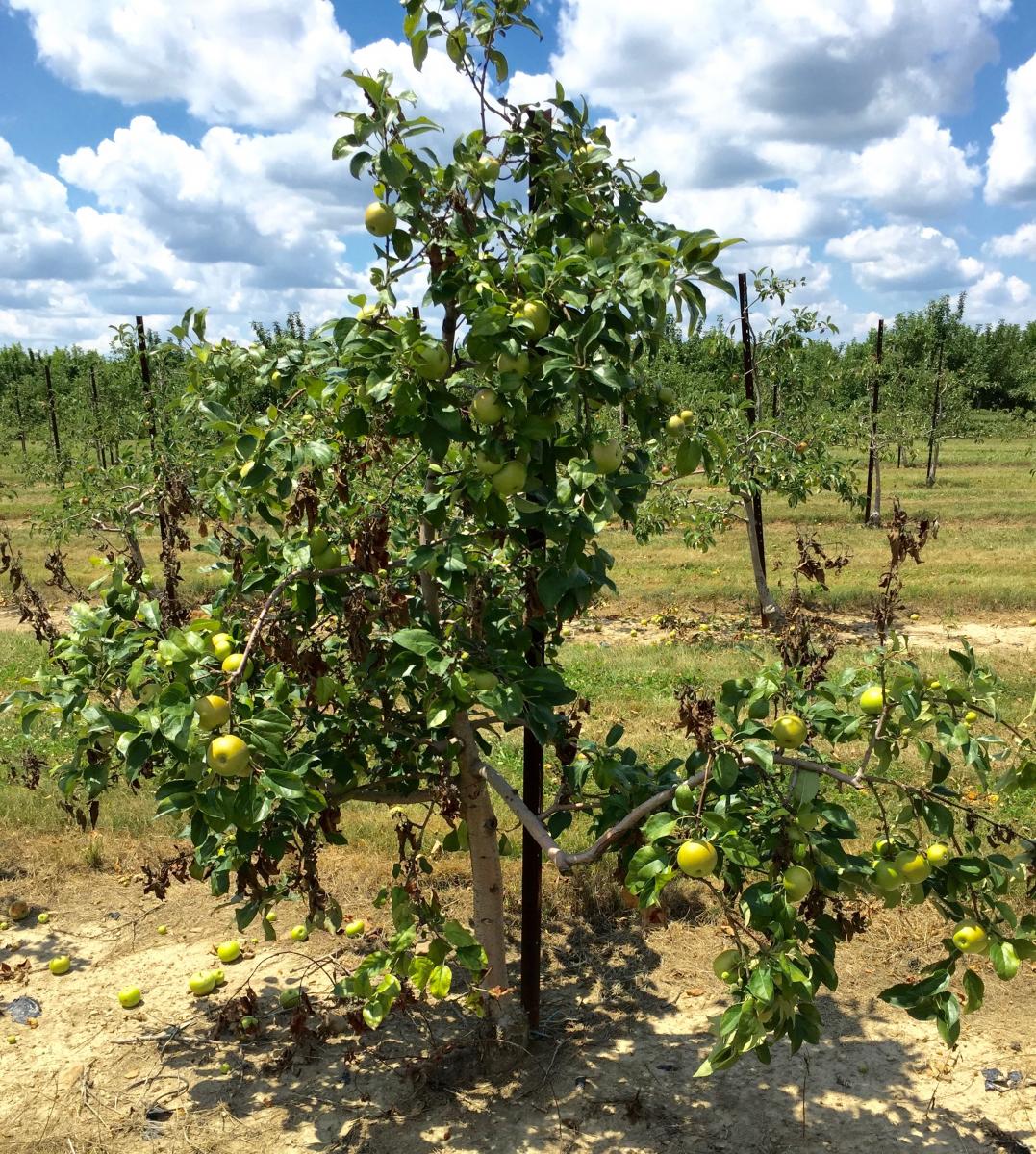Fireblight (Erwinia amylovora)
Overview:
- Caused by bacteria Erwinia amylovora
- Onset in the spring as bacterial cells ooze in a yellow-amber liquid from existing cankers on infected plants
- Bacteria spread to flowers, leaves, fruit, and stems by insects, wind, rain, or pruning equipment
- Bacteria penetrates through pruning wounds and natural openings such as stomates and nectaries
- Thrives in warm, wet weather in the spring
- Twigs and branches die rapidly and appear scorched
- Tender shoots droop and bend as they die, causing “shepherd’s crook“
- Cankers later form at the base of branches, and susceptible plants die
- Host plants: Rosaceae family – apple, crabapple, cotoneaster, hawthorn, mountain ash, pyracantha, pear
- Highly associated with host bloom period per crop
Management:
Cultural Practices:
- Improve plant vigor, but avoid heavy spring fertilization that can promote succulent growth
- In late summer (when oozing no longer occurs), prune diseased wood 6-8 inches below the infection, sterilizing the tools between cuts
- Remove waterspouts
- Dispose of infected plant material
- Replace susceptible varieties with resistant ones
Materials:
- Contact bactericides:
- Copper [M01]: cuprous oxide, copper hydroxide, copper sulfate
- Phosphonates[P07]: fosetyl-Al
- Streptomycin sulfate [25]
- Systemic fungicides:
- {DMI} Triazoles [3]: Myclobutanil, Propiconazole, Triadimefon, Imidazole
- Thiophanate methyl [M1]
- Considerations:
- Do not apply group [P07] and copper-based [M01] fungicides within 14dof one another, as phytotoxicity is likely to occur! Rotation is critical to avoid resistance.





Disclaimer – Materials do not cover all possible control scenarios and are intended for licensed professionals. Tradenames do not imply endorsement and are used as examples. You must strictly follow the label for each compound prior to use. Rutgers is not responsible form is used materials or damages thereof. The label is the law. Labels will provide detailed information on use and restrictions. Additionally, application intervals, compatibility, surfactant use, PHI, PPE, important and other key information is described in detail. Always discuss treatments with your local agents. Note: Neonicotinoids can only be legally applied in commercial agriculture settings by licensed applicators. Guidelines and recommendations made in this presentation are specific to the state of New Jersey.
